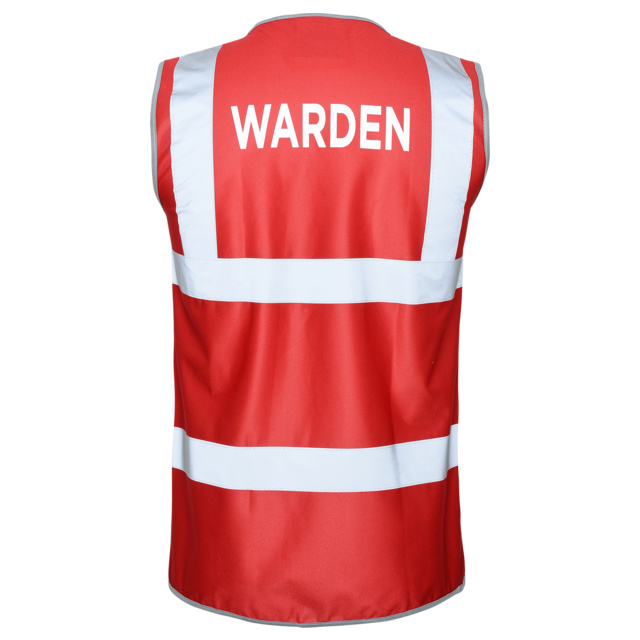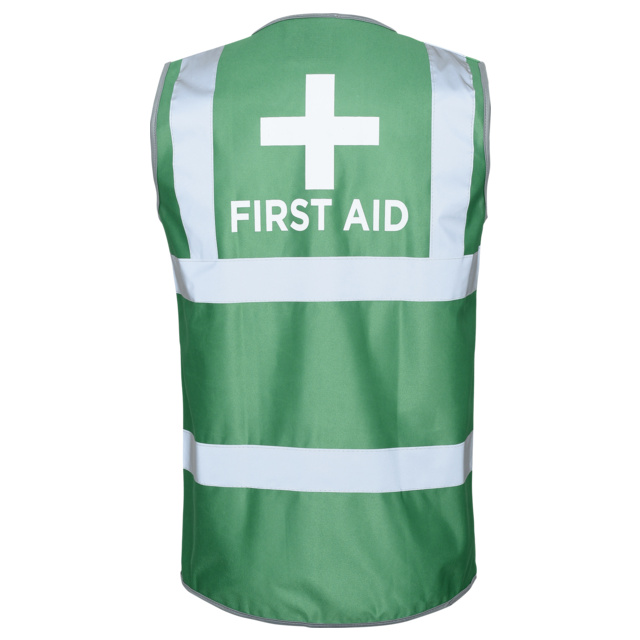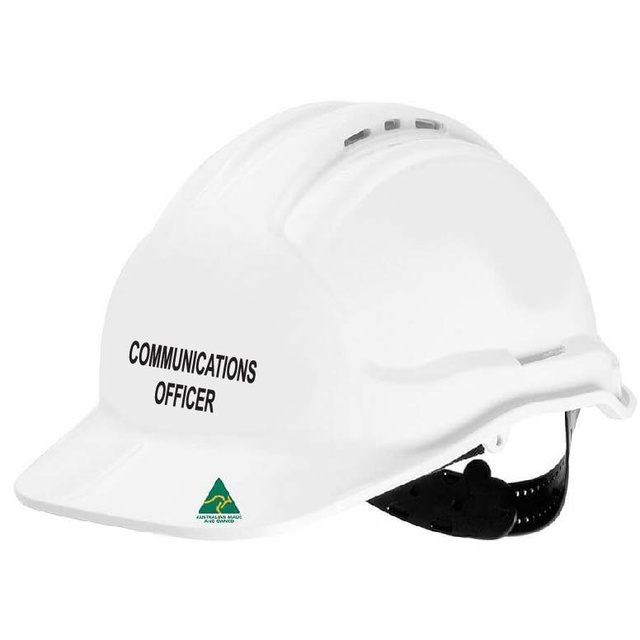FIRE WARDEN, CHIEF WARDEN AND FIRST AID VESTS AND CAPS
Workdepot supplies a variety of emergency warden vests, ready for dispatch at a moment's notice. These come printed boldly on the front and back of the vest, making them suitable for fire wardens, chief wardens, floor wardens, area wardens, etc. These vests are made with durable and lightweight polyester. They are available in a wide range of sizes - XS, S, M, L, XL, 2XL, 3XL, 5XL, and 7XL. These vests are long-lasting and safer to use.
If you require any customisation, to match your company branding requirements, we can do that too and have them custom printed for the same price. We deliver the products straight to your door, through rush delivery in 1-2 days. Pick up option is also available from our outlet.
The wearer of these vests can be assured of recognition and can carry out any work as required without announcing themselves in any situation. We offer other colour options too on request. But please note that they will not be consistent with the Australian Standards.
What are the the colours for each the roles within the ECO?
| Role | Colour | Colour Code (R,G,B) |
| Chief Warden | White | (255,255,255) |
| Deputy Chief Warden | White | (255,255,255) |
| Communications Officer | White | (255,255,255) |
| Floor Warden/Area Warden/Building Warden | Sun Yellow | (255,215,0) |
| Warden | Red | (227,66,52) |
| First Aid Officer | Pine Green with first aid cross | (14,171,114) |
| Class Wardens, Site Warden, Factory Warden | Consistent through facility | Any |
Note: The actual colours used in a specific facility are determined by the Emergency Planning Committee (EPC) and documented in that facility's Emergency Plan. The crucial point is that the chosen colours are used consistently within that facility for easy identification.
Can we add special site wardens?
Yes, the framework provided by AS 3745-2010 allows for flexibility. While it defines core ECO roles (Chief Warden, Floor/Area Wardens, etc.), the Emergency Planning Committee (EPC) can tailor the ECO structure based on the facility's specific risks and needs.
- Adding Special Site Wardens: If your site has unique areas, processes, or risks that warrant dedicated personnel during an emergency (e.g., a laboratory warden, a construction zone warden, a hazardous materials area warden), the EPC can certainly define and incorporate special site wardens into the ECO structure within the Emergency Plan. Their specific roles and responsibilities must be clearly documented.
- Colour Requirements: The standard requires that all ECO members are clearly identifiable. The EPC must decide on the method of identification (e.g., specific coloured vests, caps, or hard hats) for these special roles. The key is to choose a colour or identifier that is distinct (if necessary), easily recognisable within your facility, and documented in the Emergency Plan alongside the standard warden colours chosen for your site.
How many minimum different wardens do I need?
Australian Standard AS 3745-2010 does not specify a fixed number or ratio for how many wardens (Chief, Deputy, Floor/Area Wardens) you need.
Instead, the required number depends on factors specific to your facility, which must be assessed by your Emergency Planning Committee (EPC). Key considerations include:
- Facility Size and Complexity: Larger or more complex buildings generally require more wardens.
- Number of Occupants: Higher occupancy levels usually necessitate more wardens.
- Layout: The physical layout (multiple floors, separate buildings, complex escape routes) influences how many wardens are needed to cover all areas.
- Specific Risks: High-risk areas may require dedicated or additional warden coverage.
- Hours of Occupancy/Shifts: You need enough trained wardens to ensure coverage during all occupied hours, including accounting for shift changes and potential absences (requiring deputies or sufficient numbers).
The goal is to have enough trained ECO members available at all times to effectively manage an emergency and ensure all designated floors or areas are covered according to your Emergency Plan. Your EPC must determine the appropriate number based on these factors and a thorough risk assessment.
Do Fire Wardens need special vests and caps?
According to AS 3745-2010, the requirement is that all ECO members (including wardens) must be readily identifiable during an emergency.
The standard gives examples of how this identification can be achieved, such as using:
- Coloured vests
- Coloured caps
- Coloured helmets
It does not mandate that all wardens must wear a specific combination, like both vests and caps.
The decision on the exact method of identification rests with your facility's Emergency Planning Committee (EPC). They will determine the most appropriate way to identify wardens (it could be vests only, caps only, helmets in certain areas, or a combination) and document this in your Emergency Plan. The key is that the chosen method makes wardens clearly recognisable within your specific facility.
How does the Fire Warden of Chief Warden need to be identified?
Both the Chief Warden and Floor/Area Wardens (often commonly referred to as 'fire wardens') need to be readily identifiable during an emergency, as required by AS 3745-2010.
However, the standard does not specify the exact method that must be used. It provides examples like:
- Wearing distinctively coloured vests
- Wearing distinctively coloured caps
- Wearing distinctively coloured helmets
The specific method and colours are decided by your facility's Emergency Planning Committee (EPC) and documented in your Emergency Plan.
While not mandatory, the standard suggests example colours that are commonly used:
- Chief Warden: Typically identified by White (e.g., white vest or hard hat).
- Floor/Area Warden ('Fire Warden'): Typically identified by Red (e.g., red vest or hard hat).
The crucial point is that the chosen identification method makes these roles clearly recognisable within your facility during an emergency.
Which colours to avoid when shopping for Warden vests?
AS 3745-2010 does not explicitly list specific vest colours that should not be used. The standard's primary focus is ensuring that Emergency Control Organisation (ECO) members are clearly and readily identifiable.
Therefore, the decision on which colours to avoid is less about specific standard prohibitions and more about practical considerations for ensuring clarity in your specific facility. Generally, the Emergency Planning Committee (EPC) should avoid colours that:
- Blend into the environment: Colours that make it hard to see the warden against the typical background of your facility should be avoided.
- Cause confusion with other roles: Specifically, it's highly recommended to avoid standard high-visibility yellow and high-visibility orange for warden identification. These colours are very commonly used as general Personal Protective Equipment (PPE) for workers in many industries. Using these same colours for wardens may not sufficiently distinguish the specific authority and role of ECO members during an emergency, potentially leading to confusion. If these colours must be used, ensure the vests have very clear, large markings (e.g., "FIRE WARDEN", "CHIEF WARDEN") to differentiate them from standard hi-vis workwear.
- Conflict with Emergency Services: Avoid colours that could easily be mistaken for those used by primary emergency services personnel (Police, Fire Brigade, Ambulance) unless specifically coordinated with them.
- Are easily confused with each other: If multiple warden roles use different colours, ensure the chosen colours are distinct enough not to be confused, especially under stress or in low light.
The key is to choose colours that stand out in your environment and clearly and unambiguously distinguish ECO members for everyone in the facility during an emergency. The EPC should make this decision based on a practical assessment of your workplace.
AS 3745-2010 itself does not specify colour shades like 'Sun Yellow' or 'Lime'. However, in practice, to ensure clear identification and avoid confusion with general high-visibility Personal Protective Equipment (PPE), there is a relevant distinction:
- Many suppliers offer warden vests in a brighter, deeper yellow (often called 'Sun Yellow' or 'Gold Yellow'). This distinct shade helps differentiate the warden's specific emergency role from the very common fluorescent yellow/green ('Lime') colour frequently used for standard hi-vis workwear vests worn for general site safety PPE.
So, while the standard doesn't dictate shades, if yellow is chosen for any warden role, using a distinct 'Sun Yellow' type shade is a practical way to help ensure the warden is clearly identified in their specific emergency management capacity, rather than being mistaken for someone just wearing general PPE. The final choice of colour and shade rests with the facility's Emergency Planning Committee (EPC).























